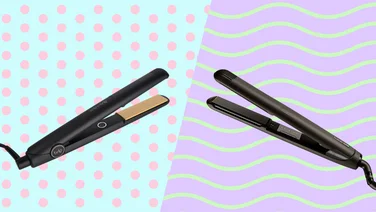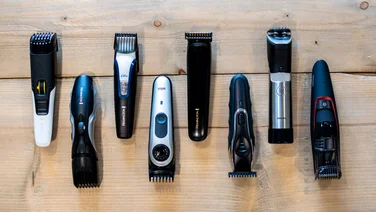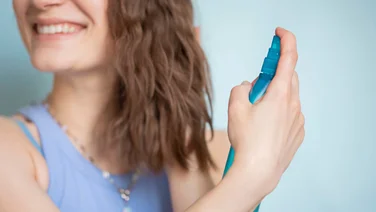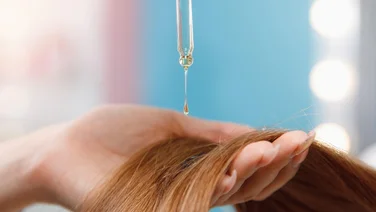To help us provide you with free impartial advice, we may earn a commission if you buy through links on our site. Learn more

Taking care of your curls can often feel like a lot of research, trial and error to find out what works – whether that’s getting the right products, nailing your routine or just understanding what your curls need.
However, if you want an expert option, that’s where the Curly Girl Method comes in.
What is the Curly Girl Method?
The Curly Girl Method (also known as just “CGM”) is an approach to help people with curly hair to embrace and enhance their natural curl and wave patterns. It was developed by hairstylist Lorraine Massey, gaining popularity after it was introduced in her book “Curly Girl: The Handbook”. The advice is about taking care of natural curls while avoiding the things that can cause damage to your curl pattern, making it harder to style.Understanding your hair’s porosity and curl pattern is the place to start. Then it’s down to ditching certain items from your routine and swapping them out for hydration and moisture boosting products and techniques (more on those later).
Curly hair can be more prone to dryness and frizz. The natural structure of curls makes it difficult for the scalp’s natural oils to travel down the hair shaft, leading to a lack of moisture at the ends. This dryness can lead to tangles, breakage and split ends. Curly hair can also be more porous, meaning it tends to absorb and retain more moisture, which can make it frizzy – especially when it’s humid. This is where the Curly Girl Method comes in.
READ NEXT: Best products for curly hair
Benefits of the Curly Girl Method
The main goal of this routine is to help you love your curls and take care of them properly. Two big benefits of the Curly Girl Method are improved moisture retention and reduced product build-up on the hair that can stop it from being fully hydrated.
Another big CGM plus point is that you spend less time touching and manipulating your hair during the day and night. This means less frizz and less disruption of your natural curl patterns, along with reduced breakage, which helps to minimise the number of flyaways and support healthy hair growth. Brushing dry hair is out – protecting your hair is in.
READ NEXT: Best hairdryers for curly hair
Following the Curly Girl Method
Looking for a CGM step-by-step? There are a few different variations, and some people will have steps that they change slightly to work for their hair, but the overall rules remain the same.

1. Eliminate sulphates
Start by ditching shampoos from your routine that contain sulphates as they can strip the hair of its natural oils, leading to dryness. Sulphates, like sodium lauryl sulphate and sodium laureth sulphate, are commonly used in shampoos to create lather and remove dirt, oil and product build-up. But they can be too harsh for curly hair.
Check the labels before you add products into your routine, and if in doubt, community-based database CurlScan or similar can usually tell you whether or not your hair product is CGM approved. Ideally, you want to look for sulphate-free shampoos and cleansers, or low-sulphate ones can work too.
2. Avoid silicones
Steer clear of hair products containing silicones, as they can create a build-up on the hair shaft. This can affect the hydration of your hair and weigh down your curl pattern, while leaving it looking dull.
Look for conditioners and styling products labelled “silicone-free”. Silicones often have names ending in “cone,” “conol,” “xane” or “siloxane”. Common examples include dimethicone, cyclomethicone and amodimethicone. Some silicones may have longer chemical names that include the word “silicone”.
3. Co-washing
Embrace co-washing (also known as “conditioner washing”), which involves using a conditioner to cleanse the hair instead of traditional shampoo which can be too drying for curls. Using a conditioner instead helps retain natural moisture while still providing a gentle cleanse.

Co-washing is particularly beneficial for curly hair as it can reduce breakage and stop frizz. Traditional shampoos, especially those containing sulphates, can strip curly hair of its natural oils, leaving it parched and prone to breakage. Co-washing involves using a conditioner to cleanse the hair, preserving these essential oils and maintaining the hair’s natural moisture balance.
4. Moisturising conditioners
Choose moisturising conditioners that cater to curly hair needs. Apply the conditioner generously, focusing on the mid-length to the ends of the hair. Use a wide-tooth comb to detangle while the conditioner is in your hair.
Look for moisturising ingredients like glycerin, aloe vera, coconut oil, shea butter, jojoba oil and argan oil for a curl-boosting hit of hydration. Whether you co-wash or decide that you still want some shampoo in your routine, getting the conditioner right can make a massive difference.
5. Scrunch & plop
After washing and conditioning, scrunch your hair gently to encourage curl formation and enhance the natural definition of the curls. (Scrunching involves gently squeezing and lifting sections of wet or damp hair towards the scalp, encouraging the formation of natural curls.) This helps distribute styling products evenly and promotes the curl pattern.
“Plopping” involves wrapping wet or damp hair in a microfibre towel or cotton T-shirt to gently absorb excess water and set the curls in place. This helps to reduce frizz caused by manipulating and moving your hair too much. Together, scrunching and plopping create well-defined, frizz-controlled, bouncy curls.

Selecting the right styling products is important for curly hair, so choose curl-specific styling products that are designed to enhance natural textures, provide moisture and minimise frizz. Exactly which products you use will depend on your hair type and curl pattern, but gels, mousses and curl defining creams can all help. Applying these products to damp hair and scrunching can help create defined curls without the crunchiness associated with some traditional gels.
Leave-in conditioners and curl refreshers are important for manageability and reducing frizz. Sometimes this step takes a bit of experimentation to discover exactly what works, but it’s always worth doing to get your routine right.
7. Diffuse or air dry
The choice between diffusing and air drying often depends on personal preference, time and the look you’re going for. Diffusing with a hairdryer, using a low heat setting and a diffuser attachment, can speed up the drying process while minimising the risk of frizz. This method is particularly useful when time is a factor and helps set the curls in place without moving your hair around too much.
Air drying is a gentler approach, allowing the curls to dry naturally without the use of heat. This method can be preferred by those seeking a more relaxed and less manipulated look. It’s also a great option for people with low-porosity hair, as it helps to maintain moisture levels.
READ NEXT: Best heat protection sprays
8. Refresh and maintain
Refreshing and maintaining curls between washes is essential. You don’t want to wash too often and risk drying your hair out, but you also want your curls to look great. To refresh curls, you can create a simple DIY spray by combining water and a leave-in conditioner in a spray bottle. Lightly mist the mixture onto your curls, and then gently scrunch your hair to reactivate the product and redefine the texture and shape.
Alternatively, you can use a specifically formulated curl refresher spray, which often contains ingredients to hydrate and revive curls without weighing them down. Apply the spray evenly, scrunching as needed, and allow your hair to air dry or use a diffuser for a quick touch-up. Avoid over manipulating your hair to maintain your curl pattern and minimise frizz.
9. Protective techniques
Protective techniques support the health and appearance of curls in the Curly Girl Method. “Pineappling” is a popular and gentle method for safeguarding curls while sleeping. This involves loosely gathering the hair at the top of the head and creating a loose, high ponytail secured with a satin or silk scrunchie or hair tie.
The advantage of pineappling lies in its ability to prevent excessive flattening or disturbance to the curls, reducing the risk of frizz and tangles overnight. This technique is particularly beneficial for those with longer hair, as it helps maintain curls while keeping tangles at bay.

Investing in a satin or silk pillowcase provides an extra layer of protection for curly hair. Unlike traditional cotton pillowcases, which can cause friction and absorb moisture, satin or silk pillowcases offer a smoother surface that minimises friction. This reduces the chances of hair breakage, split ends and friction-induced frizz. Moreover, the silk or satin material helps retain the natural oils in the hair, contributing to improved hydration and overall curl health.
10. Regular trims
Unless you have a hairdresser that you trust, getting a trim can be traumatic when you have curls. Some hairdressers might try to use techniques that work better on naturally straight hair. But getting rid of split ends and maintaining the shape of your curls is important when you’re following the Curly Girl Method.
Split ends can lead to breakage, damage and weakening of the hair shaft too. If your hair gets out of shape, it can put pressure on your curls or cause them to be unevenly distributed or weighed down, so the importance of regular visits to a knowledgeable “curly hair-friendly” salon can’t be understated.






